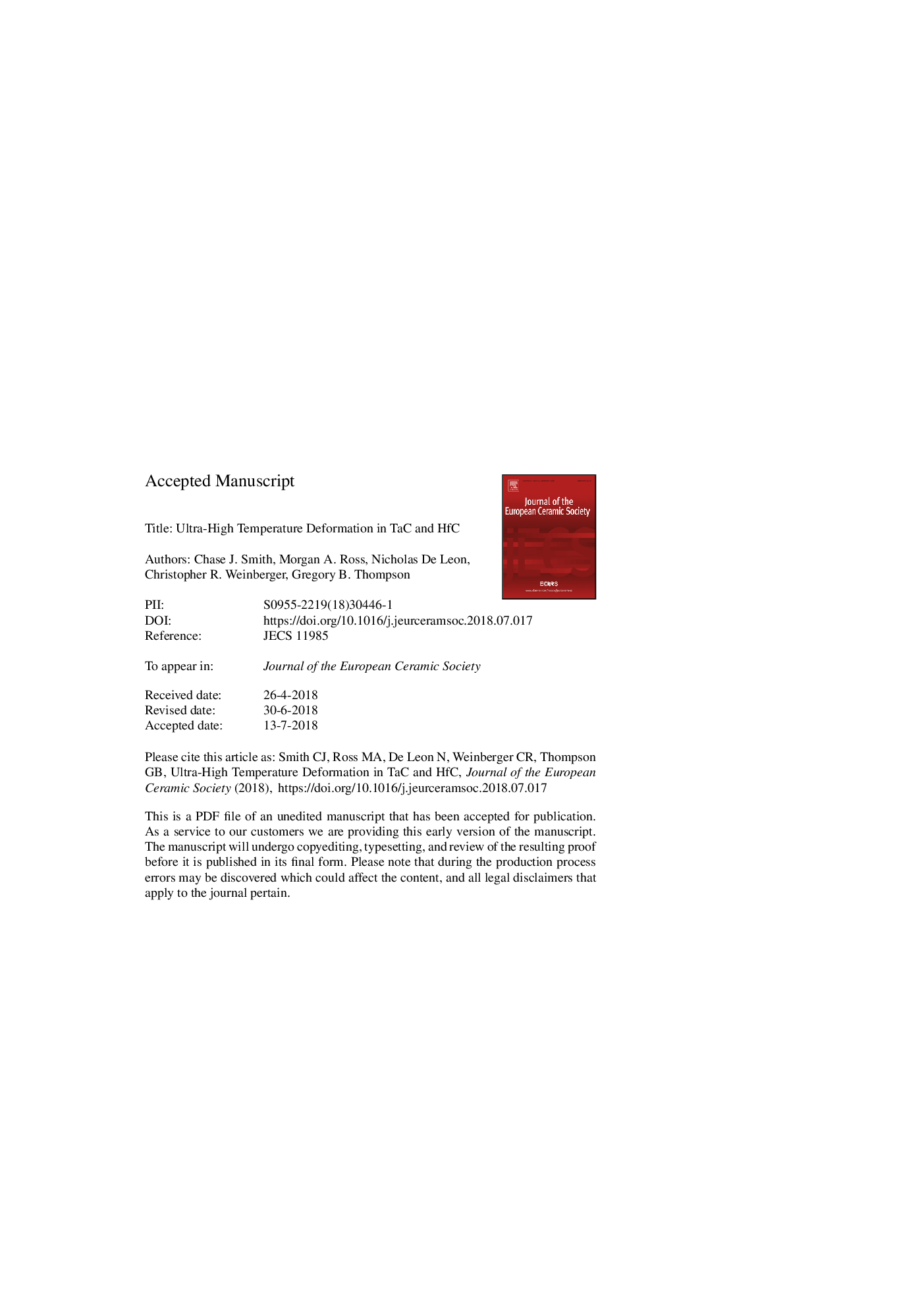| Article ID | Journal | Published Year | Pages | File Type |
|---|---|---|---|---|
| 10155477 | Journal of the European Ceramic Society | 2018 | 33 Pages |
Abstract
TaC and HfC bars were thermo-mechanically tested up to 2900â°C using a non-contact loading method based on the Lorentz force. It was observed that HfC deflected more than TaC up to 2300â°C, which has been contributed to a difference in grain size facilitating diffusional creep, either Nabarro-Herring or Coble creep. Above 2500â°C, TaC continued to deflect more with temperature whereas HfC showed a reduced deflection. This reduced deflection was found to be an artifact of a preload plastic deformation response. Though both sets of samples were identified to have a prevalence of <110>{110} slip, at elevated temperatures, it appears that mass transport and diffusional creep mechanisms dominate evident by porosity in the grain boundaries. The activation energies of TaC were found to be 946â±â157âkJ/mol (between 2500-2700â°C) and HfC to be 685â±â54âkJ/mol (between 2100-2300â°C).
Related Topics
Physical Sciences and Engineering
Materials Science
Ceramics and Composites
Authors
Chase J. Smith, Morgan A. Ross, Nicholas De Leon, Christopher R. Weinberger, Gregory B. Thompson,
